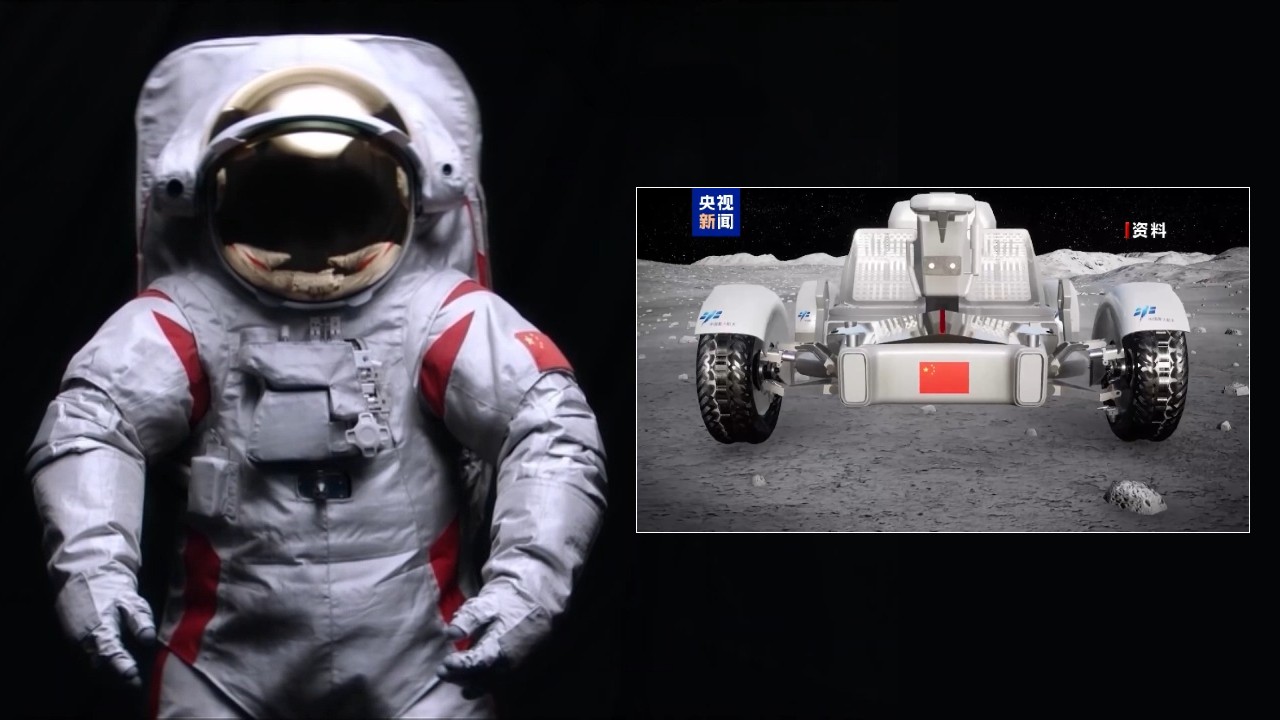Meet 'Tansuo' and 'Wangyu,' China's next moon rover and astronaut spacesuit (video)
China is progressing with the hardware needed to put astronauts on the moon.
China's human spaceflight agency has unveiled official names for a spacesuit and rover to be used in the country's moon landing mission before the end of the decade.
The China Manned Space Agency (CMSA) announced on Wednesday (Feb. 12) that the lunar extravehicular suit is named "Wangyu", which means "gazing into the cosmos." It echoes the name for the "Feitain" suit—meaning "flying into space"—currently used by Chinese astronauts to venture outside of the Tiangong space station in low Earth orbit.
Meanwhile, the unpressurized rover designed to carry two astronauts has been dubbed "Tansuo", meaning "to explore." The name reflects the lunar rover's mission and practical value in aiding the Chinese people to uncover the mysteries of the moon, which is in line with China's yearning to explore the vast cosmos, develop the space industry and build itself into a space power, CMSA said in a statement.

The names were chosen following a public call for suggestions issued in September and October 2024. More than 9,000 submissions from people from all walks of life. Asides from the names, development of the hardware is proceeding well.
"The (crew lunar rover) prototype we made has completed experiments in a simulated lunar surface test site and has also carried out a large amount of experimental work in a field test site," Zhang Chongfeng, a spacecraft designer with CMSA, told China Central Television (CCTV). "Currently, the crew lunar rover has entered the prototype stage and is undergoing detailed design and subsequent engineering tests."
"During the early stages of development, we have mastered key technologies such as the manufacture of lightweight and smaller-sized moon-landing spacesuits, as well as comprehensive protection against complex environments," Zhang Wanxin, director of the spacesuit engineering office at the China Astronaut Research and Training Center, told CCTV. "We have now fully entered the prototype development stage, and are currently conducting comprehensive performance and function assessments and verifications of the prototype products."
Another public solicitation was used to select the names of the mission crew spacecraft and lunar lander. Those are named Mengzhou ("Dream Vessel") and Lanyue ("Embracing the moon") respectively.
Get the Space.com Newsletter
Breaking space news, the latest updates on rocket launches, skywatching events and more!
China is targeting landing a pair of astronauts on the moon before 2030 and is already making progress on the various pieces of hardware needed to emulate a feat so far only achieved by the United States, such as the crew spacecraft, lander and a new launch vehicle.
Ground facilities and equipment for the production and tests have been completed and are operational, and the construction of the Wenchang Spacecraft Launch Site on Hainan island is also proceeding as planned, according to CCTV.
Join our Space Forums to keep talking space on the latest missions, night sky and more! And if you have a news tip, correction or comment, let us know at: community@space.com.

Andrew is a freelance space journalist with a focus on reporting on China's rapidly growing space sector. He began writing for Space.com in 2019 and writes for SpaceNews, IEEE Spectrum, National Geographic, Sky & Telescope, New Scientist and others. Andrew first caught the space bug when, as a youngster, he saw Voyager images of other worlds in our solar system for the first time. Away from space, Andrew enjoys trail running in the forests of Finland. You can follow him on Twitter @AJ_FI.
-
Torbjorn Larsson Wangyu has been shown in videos and seems like a great, flexible, suit.Reply
Meanwhile, I'm disappointed in Space editorial decision to lock commenting on astronomy science, specifically on US administration posthumous treatment of Vera Rubin in demoting her fight against misogynism.
